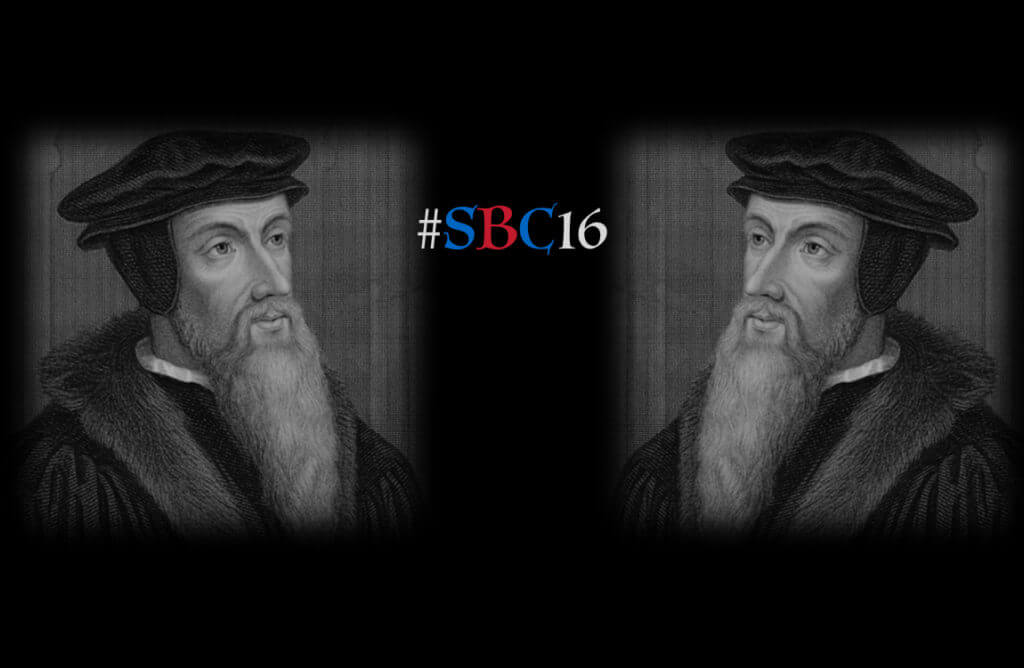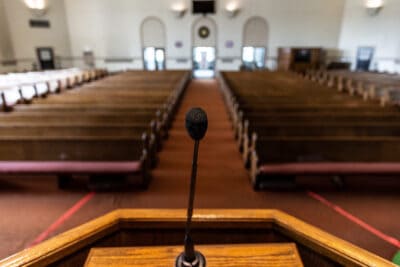By Dr. Richard Land,
This article originally appeared in the Christian Post under the title “What Made the 2016 Southern Baptist Convention Historic?”
The Southern Baptist Convention, America’s largest Protestant denomination, met this week (June 14-15) in St. Louis in what turned out to be one of its most memorable annual meetings.
Southern Baptists, with nearly 15.5 million members in approximately 47,000 local congregations nationwide sent their messengers (elected representatives) from autonomous local congregations all across the land to St. Louis with a sense that they faced important decisions.
First of all, Southern Baptists were facing a moderate, but several year decline in conversions and membership for the first time in their 161-year history.
Southern Baptists are united by their dedication to Holy Scripture, and their dual commitment to live under biblical authority and to fulfill Christ’s Great Commission to evangelize the whole world and make disciples of all nations (Matthew 28:19-20).
Beginning in the late 1970s, in a broad grassroots movement known as the “Conservative Resurgence,” Southern Baptists reaffirmed their commitment to biblical authority and evangelism, insisting that all their educational institutions and denomination agencies adhere to their historic Baptist and Evangelical heritage, including a deep commitment to missions and evangelism.
However, in recent decades there has been a growing division, if not rift, over just how Calvinistic or Reformed the Convention should be. Historically, Southern Baptists have always had Calvinism in their DNA, but it has historically been the harmony never the melody in Southern Baptist life. The past 20 years, however, there has been a resurgence of so-called “high” or 5-point Calvinism, as opposed to “low” or more moderate Calvinism that has historically been predominant.
Five-point Calvinists believe in Total Depravity, Unconditional Election, Limited Atonement, Irresistible Grace and Perseverance of the Saints (Baptists call it “Eternal Security” or “Once Saved Always Saved”), the well-known T.U.L.I.P. More moderate or “low” Calvinism affirms approximately ¾ each of Total Depravity, Unconditional Election and Irresistible Grace, none of Limited Atonement and all of Perseverance of the Saints.
The debate is really over can everyone be saved, or only the “elect,” and did Jesus die for the whole world or only the “elect.” The more moderate Calvinists believe that, if you believe that only the elect can be saved, then it will unconsciously temper evangelistic fervor over time, a belief seriously disputed by the “high” Calvinists.
So, as Southern Baptists gathered in St. Louis the two major candidates for president were a “high” Calvinist (J.D. Greear) and a “moderate” Calvinist (Steve Gaines). The doctrinal debate is also inter-generational in that Boomers tend to be moderate Calvinists while many more among Millennials espouse high Calvinism.
This generational theme was emphasized in Greear’s nomination speech, when Dr. Jimmy Scoggins, pastor of First Baptist Church, West Palm Beach, Florida, argued Greear’s election “will send a signal to an entire generation of Southern Baptists that their time has come.”
The two major candidates for president symbolized the tensions in play. Steve Gaines (59), is pastor of Bellevue Baptist Church in Memphis, a historic several thousand-member church which had already produced three Convention presidents, R. G. Lee, Ramsey Pollard, and Adrian Rogers (one of the chief architects of the Conservative Resurgence).
J.D. Greear (43), is pastor of The Summit Church in Raleigh-Durham, North Carolina, a new church that has grown rapidly to a multi-campus membership of several thousand members.
On the first ballot David Crosby, pastor of First Baptist Church, New Orleans, Louisiana, received 10.08% of the vote, while Gaines and Greear received 44.01% and 44.97% respectively. The Convention by-laws require the president must have 50% plus 1, so a run off between Gaines and Greear resulted in Gaines 49.96% and Greear 47.8% with a 108 “illegally cast.” Gaines was 3 votes short of the required majority. Consequently, for the first time in the Convention’s 161-year history a second run-off ballot was scheduled for the next morning.
Tensions were high in the convention hall as people anticipated another very close vote. However, the current president, Dr. Ronnie Floyd, invited both Gaines and Greear to the platform. Greear explained, as he did in his blog post, “Why I Am Voting for Steve Gaines as President of the SBC,” that he was withdrawing and calling for the convention to elect Steve Gaines by acclamation
Greear explained that “in the whole process I’ve been praying for unity” and that “if we go to a third vote, and one of us wins by one half of one percent, it doesn’t matter which of us it is — its hard to see how that makes us a united body.” He asked his supporters to “follow the example of our Savior, who came not to be served, but to serve.” Greear explained that as Southern Baptists “we stand together because God saved us, and we want to see Him save others — whether that’s in our neighborhoods or on the other side of the world.”
Greear stated his belief that “the best days for the SBC” were in the future, not the past, as he urged the Convention to elect Steven Gaines as the new president, which they then did enthusiastically.
You could feel the positive energy in the hall as all this transpired. People were hugging one another, some with tears in their eyes.
When you couple this with the Convention’s action the previous afternoon in calling, by an overwhelming margin, for Southern Baptists to “discontinue” display of the Confederate Battle Flag because of its being “perceived by many as a symbol of hatred, bigotry and racism,” Southern Baptists had well-founded reason to leave St. Louis with hope in their hearts that the things that unite us are indeed greater than the things that divide us.
Also, Dr. Greear’s magnanimous gesture in withdrawing and calling for all Southern Baptists to support Dr. Gaines illustrates and highlights the stark difference between the debate in the Convention over Calvinism as opposed to the earlier debate over the nature and authority of the Bible (the Conservative Resurgence). It is unimaginable that the opposing candidates in the inerrancy debate would ever have come together in such unity — the division was too deep.
The debate on inerrancy was over “What the Bible Is.” The debate over Calvinism is a debate over “What the Bible Says” — a question of interpretation rather than a debate over basic worldview.







